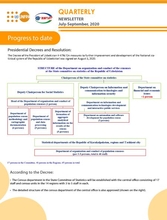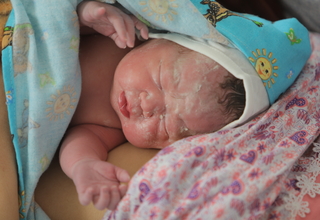Tashkent, 21 November 2014—United Nations Population Fund (UNFPA), Women’s Committee of Uzbekistan and Republican Scientific Practical Centre “Oila” (“Family”) join hands in organizing a day-long conference around the issues related to ICPD (International Conference on Population and Development) Beyond 2014, as well as launching of UNFPA’s annual publication, State of the World Population Report 2014.
This day-long conference, entitled “The new horizons for Uzbekistan in further improving men’s and women’s health and strengthening the role of families in light of renewed ICPD Plan of Action”, aims to discuss the tendencies and priorities for Uzbekistan within the framework of renewed ICPD agenda.
The conference participants will discuss important aspects related to population and development in Uzbekistan, including issues like demographic trends, reproductive health, strengthening the role of families and upbringing of healthy generation in Uzbekistan in the connection with ICPD Agenda Beyond 2014. Over 100 representatives of national institutions, NGOs and academia take part in the conference.
The State of the World Population Report is UNFPA’s flagship product that is being developed annually for over ten years. In these years, the reports have focused on variety of issues related to population and development. The 2014 Report is entitled “The Power of 1.8 billion: Adolescents, Youth and the Transformation of the Future” and it focuses on issues of young people and their role in development.
“Today’s record population of young people presents an enormous opportunity to transform the future,” says UNFPA Executive Director, Dr. Babatunde Osotimehin. “Young people are the innovators, creators, builders and leaders of the future. But they can transform the future only if they have skills, health, decision-making, and real choices in life,” he adds.
Young people, between the ages of 10 and 24, constitute 1.8 billion people or some 18% of the world’s total population of 7.3 billion. Some 90% of the world’s young people live in less developed countries. Despite declining fertility rates globally, it is expected that the total youth population will continue to rise, reaching around 2 billion by 2050 (estimates based on medium fertility projections).
Developing countries with large youth populations could see their economies soar, provided they invest heavily in young people’s education and health and protect their rights, UNFPA’s Report states. The potential economic gains would be realized through a “demographic dividend”, which can occur when a county’s working age population is larger than the population that is dependent and younger, the report shows.
But to maximize the dividend, countries must ensure their young working-age populations are equipped to seize opportunities for jobs and other income-earning possibilities, through the right policies and investments in human capital. The regional supplement of the Report provides some recommendations on required policies and steps for the countries of Eastern Europe and Central Asia region.
To promote the rights and opportunities for young people in Uzbekistan, UNFPA works jointly with Women’s Committee to support youth healthy lifestyle initiative “Orasta Yoshlar” (Diligent Youth). The initiative is aimed at raising young people’s awareness on issues like reproductive health and rights, general hygiene, healthy lifestyle and gender equality. By 2014 UNFPA and Women’s committee have established 11 youth educational centers in each district of Tashkent and 12 throughout the Republic, one in each region.
The Report is accessible here: www.unfpa.org/swp/


